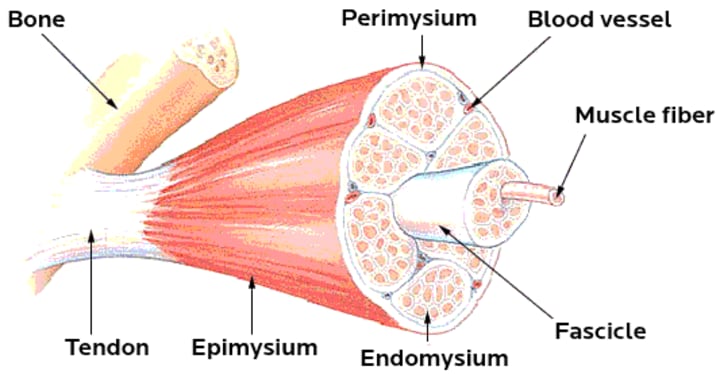Edible Juicy Steak Made In The Lab From Stem Cells Using 3D-Food Printing With Zero Animal-Cruelty
Print and eat your steak and other types of meat. The future looks highly promising.

Any novel invention with a wide spectrum of applications tends to get positively exploited across diversified industrial arenas. 3D printing is not an exception to this.
3D pens, for instance, is a major hit among kids, artists, and a multitude of professionals who are into product designing.
Right from 3D printed toys, flip-flops, and jewelry to architectural models, customized prosthetics, shoes, and even actual homes have all been 3D printed successfully. So, what about food, especially meat, specifically steak?
No, I am not talking about a steak replica that was doodled using a 3D pen by a ten-year-old. I am talking about real, edible, and digestible steak designed and printed in a lab or an industry. Sounds Surreal? Modern-day sorcery?Nope. Read on.
What’s 3D printing and how is food 3D printed?
3D printing is the process of producing physical three-dimensional objects based on a computer model. A wide range of materials, including plastics, metals, resins, rubber, concrete, paper, and wood, can be used to print a variety of 3D constructions. Chocolate and batter can also be utilized in the same way. It’s as simple as filling a printer cartridge with semisolid/liquid food and printing it out of a specialized 3D printer.

Until recently, the concept of printing real food on demand appeared far-fetched, if not outright impossible. It seemed like something out of a science fiction movie or a word used in space missions. This field, on the other hand, is advancing at a breakneck pace.
Thanks to 3D printing technology, both food and packaging can now be printed.
Currently, 3D printing of meat and other food types is done, obviously, using one of the high-tech 3D printers and using emulsified food/meat ink to 3D print fancy-looking products. The videos below demonstrate the present scenario in Food 3D printing.
The method
Fused deposition manufacturing requires layer-by-layer application of material extruded from the nozzle, which may be heated. Although different materials may be used, this is the best technique for 3D chocolate printing. When mixed with the previous layer, the extruded material is heated just above its melting point to allow for quick and easy cooling. This is also the most extensively used method for 3D food printing. This printer can have one or more extruders, allowing multiple components to be printed at the same time.
Components for food printing are divided into three categories:
natively printable materials
• non-printable traditional food materials
• alternative ingredients
Chocolate, frosting, hydrogel, cheese, hummus, pasta dough, butter, jelly, and other products directly extruded from a syringe belong to the first group. However, powdered ingredients such as sugar, flour, and other similar substances are included. Meat, rice, veggies, and fruits are examples of non-printable conventional food materials. Hydrocolloids are added to them to make them suitable for extrusion in 3D printing. Hydrocolloids like xanthan gum and gelatine are often employed. Insect powder has been researched as a protein source to replace regular meat and could be a viable substitute.
One of the most significant advantages of 3D printing food is the ability to personalize foods to meet the health and dietary needs of consumers. Customizing fat/protein ratios in red meat and producing dishes with specific nutrients and varied consistencies for elderly folks who find it difficult to chew and swallow food would be excellent implications.
To put it another way, 3D food printing allows us to make meals that look the same but have various nutritional values depending on the needs of the person for whom they are made.
The big question is “ Is it possible to 3D print meat without having to sacrifice livestock every time?”
The answer is a bigger YES! In a very recent research study, Dong-Hee Kang and colleagues from Osaka University, Japan, have exploited the unique nature of stem cells, and cellular bioprinting and fabricated a method to make whole cut meat-like tissue.
What are stem cells?
Stem cells are undifferentiated cells present in all multicellular organisms with the capacity to both differentiate and multiply into different cell types that make up an organism.
Stem cells provide new cells for the body as it grows, and replace specialized cells that are damaged or lost. They have two unique properties that enable them to do this:
They can divide over and over again to produce new cells.
As they divide, they can change into the other types of cells that make up the body.

The researchers used Wagyu cow stem cells to 3D-print a meat replacement with muscle, fat, and blood vessels arranged to closely resemble traditional steaks. This research could pave the way for a more sustainable future with the widespread availability of cultured meat.
Wagyu means “Japanese cow” and is recognized worldwide for its high intramuscular fat content, often known as marbling. The beef’s rich aromas and particular texture are due to this marbling. However, because of its large impact on climate change, the way cattle are farmed now is widely considered unsustainable. At the moment, the only “cultured meat” options available are poorly organized muscle fiber cells that fail to replicate the complex structure of actual beef steaks.
What we are looking for here is slaughter-free meat that not only looks, smells, and feels like traditionally sourced meat, but is also nutritionally similar and complete.
Muscles are made of muscle fibers(proteins), fats and, blood vessels connected to the tendon(connective tissue).

The researchers replicated the body’s process of muscle fiber formation and development in the lab (in-vitro). To do so, they’ve taken use of stem cells’ unique properties, which allow them to self-replicate while simultaneously developing into a specific cell type when exposed to the right growth factors.
Two types of stem cells were taken from the actual meat tissue of the famed Japanese cow Wagyu and stabilized and cultivated in the lab: bovine satellite cells and adipose(fat)-derived stem cells. These “multipotent” cells can be engineered to develop into any type of cell required to generate cultured meat under the correct laboratory circumstances. They used stem cells to create muscle fibers, fat fibers, and blood vessel fibers, and then bioprinted each cell type to maximize bulk. The adipose(fat)-derived stem cells were then developed into fat fibers and blood vessel fibers, while the bovine satellite cells were differentiated into muscle fibers.

The fibers were then stacked layer by layer in 3D to mimic the tissue structure of real Wagyu meat, which was then sliced perpendicularly, much like the traditional Japanese candy Kintaro-ame.
Through this process, the team was successful in reconstructing the complex meat tissue structure in a customizable way. Through better optimizations and improvements in this technology, it will be possible to make subtle adjustments to the fat and muscle components.
Stem cells are cells that can maintain their indefinite lifespans in the lab, provided the conditions are correct. They can be converted into any type of cell and subsequently into any sort of tissue.
Harvest stem cells once and use them forever! Make tonnes of meat without sacrificing a single animal life. How brilliant! Doesn’t it sound satisfying and euphoric? It does to me. I am sure it does to you and everyone. Until this technology is mainstream and accessible, however, we will have to wait. That wait will definitely be worth it.

Thanks for reading.
Love, Peace, and Bliss.
If you liked what you read, please consider subscribing, liking, or sending me a small tip.
...........................
About the Creator
The Soulful Scribbler
Teacher, Scientist, Writer, Reader, Poet






Comments
There are no comments for this story
Be the first to respond and start the conversation.